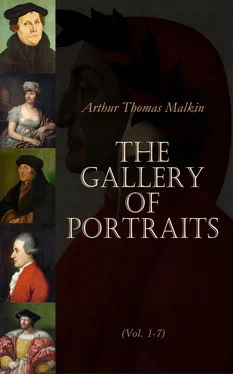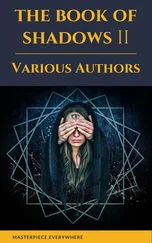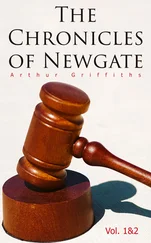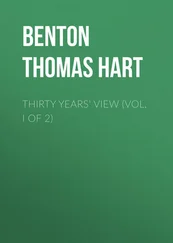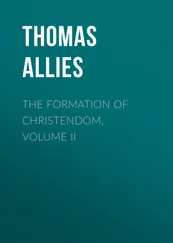The mass of Dante’s writings, considering the unfavourable circumstances under which he laboured, is almost as wonderful as the extent of his attainments. The treatise ‘De Monarchia,’ which he composed on the arrival of Henry VII. in Italy, is one of the most ingenious productions that ever appeared, in refutation of the temporal pretensions of the Court of Rome. It was hailed with triumphant joy by the Ghibelines, and loaded with vituperation by the Guelfs. The succeeding emperor, Lewis of Bavaria, laid great stress on its arguments as supporting his claims against John XXII.; and on that account, the Pope had it burnt publicly by the Cardinal du Pujet, his legate in Lombardy, who would even have disinterred and burnt Dante’s body, and scattered his ashes to the wind, if some influential citizens had not interposed. Another Latin work, ‘De Vulgari Eloquentia,’ treats of the origin, history, and use of the genuine Italian tongue. It is full of interesting and curious research, and is still classed among the most judicious and philosophical works that Italy possesses on the subject. He meant to have comprised it in four books, but unfortunately only lived to complete two.
Of his Italian productions, the earliest was, perhaps, the ‘Vita Nuova,’ a mixture of mysterious poetry and prose, in which he gives a detailed account of his love for Beatrice. It is pervaded by a spirit of soft melancholy extremely touching; and it contains several passages having all the distinctness and individuality of truth; but, on the other hand, it is interspersed with visions and dreams, and metaphysical conceits, from which it receives all the appearance of an allegorical invention. He also composed about thirty sonnets, and nearly as many ‘Canzoni,’ or songs, both on love and morality. The sonnets, though not destitute of grace and ingenuity, are not distinguished by any particular excellence. The songs display a vigour of style, a sublimity of thought, a depth of feeling, and a richness of imagery not known before: they betoken the poet and the philosopher. On fourteen of these, he attempted in his old age to write a minute commentary, to which he gave the title of ‘Convito,’ or Banquet, as being intended “to administer the food of wisdom to the ignorant;” but he could only extend it to three. Thus he produced the first specimen of severe Italian prose; and if he indulged rather too much in fanciful allegories and scholastic subtleties, these blemishes are amply counterbalanced by a store of erudition, an elevation of sentiment, and a matchless eloquence, which it is difficult not to admire.
These works, omitting several others of inferior value, would have been more than sufficient to place Dante above all his contemporaries; yet, they stand at an immeasurable distance from the ‘Divina Commedia,’ the great poem by which he has recommended his name to the veneration of the remotest posterity. The Divine Comedy is the narrative of a mysterious journey through hell, purgatory, and paradise, which he supposes himself to have performed in the year 1300, during the passion week, having Virgil as his guide through the two regions of woe, and Beatrice through that of happiness. No creation of the human mind ever excelled this mighty vision in originality and vastness of design; nor did any one ever choose a more appropriate subject for the expression of all his thoughts and feelings. The mechanical construction of his spiritual world allowed him room for developing his geographical and astronomical knowledge: the punishments and rewards allotted to the characters introduced, gave him an excellent opportunity for a display of his theological and philosophical learning: the continual succession of innumerable spirits of different ages, nations, and conditions, enabled him to expatiate in the fields of ancient and modern history, and to expose thoroughly the degradation of Italian society in his own times; while the whole afforded him ample scope for a full exertion of his poetical endowments, and for the illustration of the moral lesson, which, whatever his real meaning may have been, is ostensibly the object of his poem. Neither were his powers of execution inferior to those of conception. Rising from the deepest abyss of torture and despair, through every degree of suffering and hope, up to the sublimest beatitude, he imparts the most vivid and intense dramatic interest to a wonderful variety of scenes which he brings before the reader. Awful, vehement, and terrific in hell, in proportion as he advances through purgatory and paradise, he contrives to modify his style in such a manner as to become more pleasing in his images, more easy in his expressions, more delicate in his sentiments, and more regular in his versification. His characters live and move; the objects which he depicts are clear and palpable; his similes are generally new and just; his reflections evince throughout the highest tone of morality; his energetic language makes a deep and vigorous impression both on the reason and the imagination; and the graphic force with which, by a few bold strokes, he throws before the eye of his reader a perfect and living picture, is wholly unequalled.
It is true, however, that his constant solicitude for conciseness and effect led him, sometimes, into a harsh and barbarous phraseology, and into the most unrestrained innovations; but considering the rudeness of his age, and the unformed state of his language, he seems hardly open to the censure of a candid critic on this account. On the other hand, it is impossible not to wonder how, in spite of such obstacles, he could so happily express all the wild conceptions of his fancy, the most abstract theories of philosophy, and the most profound mysteries of religion. The occasional obscurity and coldness of the Divine Comedy proceeds much less from defects of style, than from didactic disquisitions and historical allusions which become every day less intelligible and less interesting. To be understood and appreciated as a whole, and in its parts, it requires a store of antiquated knowledge which is now of little use. Even at the period of its publication, when its geography and astronomy were not yet exploded, its philosophy and theology still current, and many of its incidents and personages still fresh in the memory of thousands, it was considered rather as a treasure of moral wisdom, than as a book of amusement. The city of Florence, and several other towns of Italy, soon established professorships for the express purpose of explaining it to the public. Two sons of Dante wrote commentaries for its illustration: Boccaccio, Benvenuto da Imola, and many others followed the example in rapid succession; and even a few years since Foscolo and Rossetti excited fresh curiosity and interest by the novelty of their views. Notwithstanding the learning and ingenuity of all its expositors, the hidden meaning of the ‘Divina Commedia’ is not yet perfectly made out, though Rossetti, in his ‘Spirito Antipapale,’ lately published, seems to have shown, that under the exterior of moral precepts, it contains a most bitter satire against the court of Rome. But whether time shall remove these obscurities, or thicken the mist which hangs around this extraordinary production, it will be ever memorable as the mighty work which gave being and form to the beautiful language of Italy, impressed a new character on the poetry of modern Europe, and inspired the genius of Michael Angelo and of Milton.
There is no life of Dante which can be recommended as decidedly superior to the rest. The earliest is that of Boccaccio; but it evidently cannot be relied on for the facts of his life. There are others by Lionardo, Aretino, Fabroni, Pelli, Tiraboschi, &c. The English reader will find a fuller account prefixed to Mr. Carey’s translation of the ‘Divina Commedia,’ and in Mr. Stebbing’s Lives of the Italian Poets.
Читать дальше
